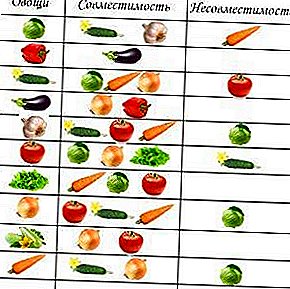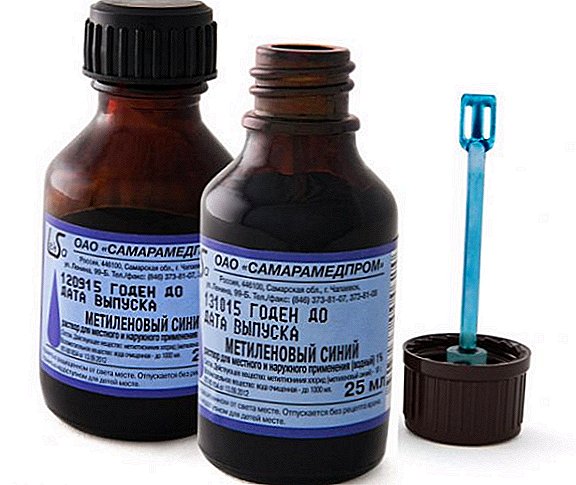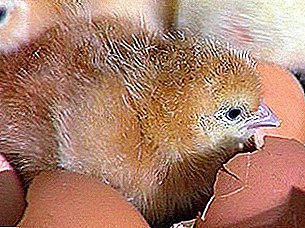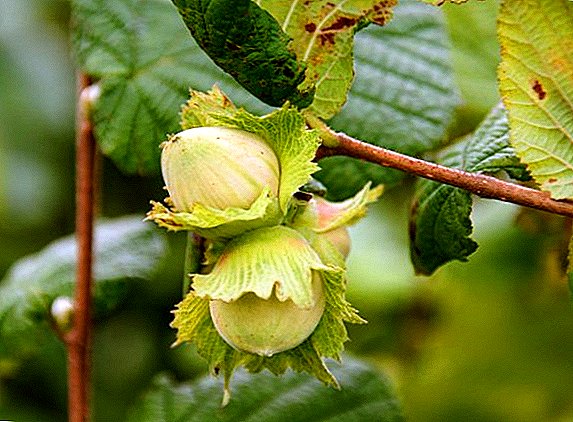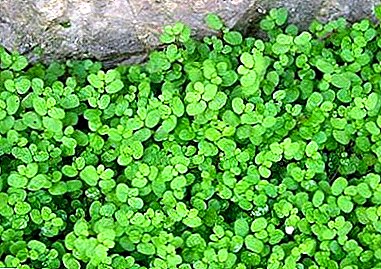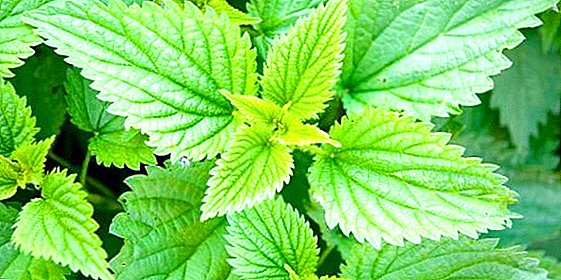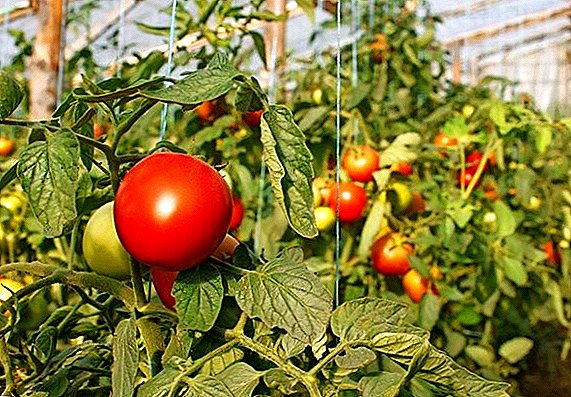 Every vegetable gardener who grows tomatoes in a greenhouse faces their diseases. But, unfortunately, not many know how to correctly diagnose infections and lesions, and then carry out effective treatment. In this article we will look at the most common problems, as well as solutions.
Every vegetable gardener who grows tomatoes in a greenhouse faces their diseases. But, unfortunately, not many know how to correctly diagnose infections and lesions, and then carry out effective treatment. In this article we will look at the most common problems, as well as solutions.
Cracking Tomatoes
 In fact, the appearance of cracks on the tomato peel is not a symptom of a disease, but the result of improperly growing a vegetable. However, cracking fruit is a fairly common disease of tomatoes in the greenhouse. Through these cracks viruses, infections and fungi penetrate into the plant. Causes of cracking:
In fact, the appearance of cracks on the tomato peel is not a symptom of a disease, but the result of improperly growing a vegetable. However, cracking fruit is a fairly common disease of tomatoes in the greenhouse. Through these cracks viruses, infections and fungi penetrate into the plant. Causes of cracking:
- overheating of the vegetable,
- frequent abundant watering that flush minerals from the soil;
- sharp wetting of dry soil when water increases the internal pressure in the vegetable, and it bursts;
- kinks in the fight against bushiness;
- nutritional deficiency, a sign of which is yellowing and dying off of foliage;
- overdose of fertilizers, especially nitrogenous.
Important! Concentrates of fertilizers should always be diluted with water in accordance with the instructions on their label.
 To prevent such a disease, tomatoes, especially those grown in polycarbonate greenhouses, Observe the following guidelines:
To prevent such a disease, tomatoes, especially those grown in polycarbonate greenhouses, Observe the following guidelines:- Choose varieties unpretentious to watering.
- Protect the bushes from the scorching sun with a scattering grid, thrown on the greenhouse, or lime jelly, covering them with the inner side of the glass.
- Observe the uniformity of moderate watering, especially at the beginning of the ripening of vegetables. Their regularity depends on soil moisture, which, among other things, is influenced by weather conditions. In the heat, water in the early morning or late evening, and in the cool it is better to water in the afternoon.
- Ventilate your “warm garden” regularly, especially in hot weather, creating a draft on quiet days, or opening only one “leeward” butt on windy days.
Fungal diseases
Frequent uninvited guests in greenhouses where tomatoes are grown are fungi, and the fight against the diseases they cause requires a systematic approach.
To protect tomatoes from disease, the following fungicides are used: Kvadris, Ridomil Gold, Thanos, Tiovit Jet, Strobe, Fitolavin, Skor, Acrobat MC, Ordan, Previkur Energy "," Antrakol "," Fitosporin-M ", Fundazol".
Usually spores of fungi penetrate into the wounds or into the natural openings of vegetables, instantly striking them. This also contributes to excessive planting density.
Late blight
 Late blight is the most common plant disease. High humidity and temperature extremes favor its occurrence.
Late blight is the most common plant disease. High humidity and temperature extremes favor its occurrence.
Learn about how to process a greenhouse made of polycarbonate from phytophthora.
Symptoms of late blight:
- the appearance of black or brown spots with arachnoid bloom, which quickly cover the entire leaf, after which it dries and dies;
- the appearance of spots on the berries.

Did you know? Botanists classify tomatoes as berries, and cooks mistakenly consider them as vegetables.Disease prevention: careful watering under the roots (it is possible through PET bottles with a cut off bottom and side opening, dug near the stems), weekly spraying with serum of cow's milk or inorganic fungicides.
Gray rot

Factors for the development of infection - cold rainy weather, poor greenhouse ventilation.
Symptoms:
- the formation of gray spots on foliage and flowers;
- spots are initially dry, and then lizlye, in a matter of hours (usually at night) apply to the entire bush in the form of a gray bloom.
Lesions are various wounds.  Prevention of infection:
Prevention of infection:
- maintaining heat in the "covered garden", as well as its airing to reduce the humidity of the air and the ground;
- carrying out cultivation works in dry, calm weather in the morning, so that the wounds could heal by the night.
Important! Remember that gray rot spores maintain their viability for two (!) Seasons.
Brown spot

Symptoms of cladosporia (also called brown spotting) appear gradually. First, yellow spots appear on the upper side of the foliage, which, growing, merge into one large spot; the lower side of the leaves is covered with brown velvet, spores of the fungus.
The process ends with their twisting and drying. This disease appears during the flowering of tomatoes (especially if they grow in the greenhouse) or the formation of the ovary and spreads from the bottom up.

Early infection is most dangerous, since long daylight hours and high humidity, which is so necessary for the young, contribute to the development of the fungus. The berries themselves are rarely affected, but if this happens, they also become brown and soft, gradually drying out.
Important! Brown spot provocateurs: dampness, a sharp temperature drop, including due to watering with very cold water.Treatment:
- before treatment, remove the affected leaves and then sprinkle (especially in the lower part of the bush) with a warm solution of milk and iodine (15 drops of iodine and two glasses of milk per half a bucket of water);
- spraying the plant and watering the land with iodine chloride solution (40 drops of iodine and two tablespoons of potassium chloride per bucket of water);
- the use of broad spectrum fungicides or copper sulfate solution.

Fighting disease:
- regular, alternate spraying of tomatoes in the greenhouse with a pale pink solution of potassium permanganate and ash decoction (two glasses of ash per water bucket);
- spraying with a weak solution (1:10) of whey.
Fusarium

This is one of the diseases of tomato leaf cultivated in the greenhouse. The fungus that causes this disease is activated in the heat, especially if the seedlings are weakened due to the low nutritional value of the soil, and there is a frequent change of rainy and hot days during stable cold nights. Excessive bushiness, “generous” top dressing, increased soil moisture or, conversely, insufficient watering, long nights, and poor greenhouse lighting also favor the reproduction of the fungus.
Symptoms of Fusarium Wilt:
- deformation of primordial stems;
- yellowing, drying, and rapid extinction of the lower tier of the foliage;
- wilting the whole bush.
 Unfortunately, if the vegetable is affected by Fusarium, it will not be possible to cure it, since the fungus develops in its internal tissues. It remains only to pluck up a bush and burn.
Unfortunately, if the vegetable is affected by Fusarium, it will not be possible to cure it, since the fungus develops in its internal tissues. It remains only to pluck up a bush and burn.Fusarium Prevention:
- mop-up in the fall;
- deep plowing and disinfection of land before sowing or planting;
- seed disinfection with fungicides;
- staking with a clean tool;
- regular hilling
Macroscopic

Macrosporia is brown or dry spotting that affects the leaves and stems, and sometimes the fruit. It spreads from the bottom up: concentrations of round brown spots appear on the foliage, which gradually grow and merge, after which the foliage dries out. On the stem, such spots (oval) cause rotting and fading.
On the fruit, usually the stem, there are dark dents, on top of which a dark velvet is formed - spores of the fungus. The best conditions for the development of the disease: heat (+ 25 ... +30 ° C) and high humidity. Spores persist on the remains of plants and in the ceilings of the room and spread with the wind and drops of condensate.
Did you know? Broth made from residues of tomato stems is toxic to insects, pests of other crops. For example, if this natural insecticide sprays fruit trees affected by aphids, they will quickly recover. This is an effective and cheap alternative to tobacco infusion.
 Prevention:
Prevention: - disinfection of seeds before sowing;
- before the appearance of the ovaries, treatment of bushes with copper-containing fungicides;
- the alternation of crops in a greenhouse, which should not participate solanaceous and cabbage;
- complete destruction of plant residues;
- fertilization with potash fertilizers.
Treatment: before the start of fruiting - treatment with antifungal drugs, and in later periods - with biological preparations. Spraying is repeated every two weeks at least three times per season.
Alternaria

This disease manifests itself in the form of dry, dark brown (or black) concentric spot on the leaves and stems, the tissues of which in the area of the spots become covered with olive "velvet", and eventually die off.
The fungus, wintering quietly on plant debris or on seeds, penetrates into the ovary in the spring and develops inside the fetus throughout the season, turning its core into prellum.
Important! Conditions that trigger Alternaria: warm weather and mechanical damage caused during the treatment, as well as the presence of other diseases.
 Combating Alternaria:
Combating Alternaria:- deep digging of soil in the fall;
- disinfection of seeds before sowing;
- timely detection of symptoms at the beginning of growth and spraying fungicides three times a month;
- the destruction of insect vectors spore (cicadas, ticks, aphids, etc.);
- during harvesting the destruction of the affected specimens.
Vertex Rot

- This pathology is not an infectious disease. This is a physiological disorder caused by poor care: irregular watering;
- at the beginning of the growing season, calcium deficiency (in vegetables, but not in the soil), caused by an excess of heat in the greenhouse;
- overfeeding plants with nitrogen.
Damage affects only the berries - they have black dents at the bottom, which eventually become watery, increase in size and begin to rot. The latter circumstance is dangerous because rot can strike healthy "neighbors."
Unfortunately, vegetables affected by top rot cannot be cured - they just need to be removed and discarded. But you can prevent this violation. 
Prevention:
- when planting seedlings, add to the wells a mixture of onion peel and shredded shells, and later - fertilizing with organic matter containing calcium (crushed eggshell, ash, etc.) or chemistry (calcium nitrate);
- spraying the ovary and unripe berries with 1% calcium nitrate solution;
- creating a healthy microclimate in a greenhouse, with moderate soil moisture, lack of condensation and regular access of fresh air.
Root rot

Fungi that cause root rot - damage to the roots and basal necks, penetrate the plants from the soil and develop rapidly with excessive watering. In illiterate farming practices, the disease may arise from germination and progress throughout the entire growth of the plant.
With root rot lesions, blackening (browning) and changes in the texture of the roots and their necks (whitish "velvet" coating), as well as their decay and fading, are observed. In sprouts, a flagellum appears under seedbed leaves, and in older seedlings, under the first true leaves, the stem easily tears out of the ground, since the root does not develop lateral roots.
If the roots are already infected, then the bush must be removed along with the earthy clod - it is impossible to cure this disease. 
Root Rot Warning:
- soil steaming;
- disinfection of the seedling mixture;
- seed dressing before sowing;
- compliance with irrigation regime (only the land is dry);
- fungicide irrigation;
- soil drainage and aeration.
Viral
Of viral lesions that affect tomatoes grown in the greenhouse, it should be noted tobacco mosaic and strick.
Mosaic

When a tobacco mosaic virus is infected, the foliage of the vegetables is “painted” into a mosaic of green spots of different shades. Occasionally, yellow spots appear on the fruit. The growth of the bush slows down, the foliage becomes wrinkled and curls. Ripening of vegetables is possible, but they are tasteless.
Important! The main "favorable" factors for tobacco mosaic: sowing of infected seeds; living in a greenhouse of tsikadok, ticks, aphids and other insects, carriers of infections; mechanical damage to the roots and stems due to careless care of plants.Unfortunately, antiviral drugs for tomatoes have not yet been developed, so it remains only to snatch the infected shrub from the bed with the root and burn it. And to avoid this trouble, you need to warn her.

Measures to combat tomato viral diseases during their cultivation in the greenhouse:
- disinfection of seeds, as well as cultivation equipment;
- the destruction of insects, carriers of infection;
- greenhouse disinfection (autumn or spring);
- destruction of plant residues after harvest, deep plowing and steaming of the soil in spring, before planting sprouts.
Tomato Strick
Strick affects the upper parts of the bush, manifesting itself in the form of brown stripes, which eventually dry out. The petioles become weak, and the fruits are riddled with irregularly shaped furrows. With significant lesions stains merge, and the foliage fades and falls; bushes are oppressed and can also die.
The causes of the disease are the same as in the mosaic: sucking insects, mites and an unclean instrument. It is also impossible to treat a streak yet - you can only, or rather, remove the infected bushes. 
Prevention of infection:
- weed removal;
- the destruction of insect pests (insecticide spraying);
- maintaining a stable temperature and humidity, disinfecting seeds before planting, as well as a cultivation tool, annual replacement of the top layer of the earth (with a spade bayonet);
- spraying the seedlings with a solution of boric acid a couple of days before planting, as well as watering the soil with a 2% potassium permanganate solution.
Prevention is the best way to avoid diseases of seedlings of tomatoes, and then their treatment will not be required. Only forethought before planting tomatoes and prudent care for them throughout the season will allow them to maintain their health and harvest a rich harvest in the fall.


